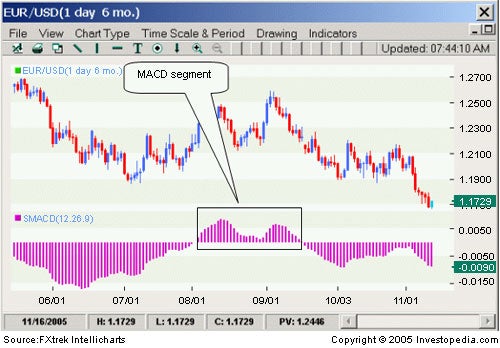 Figure 1 |
2. Once the MACD segment is established, you need to measure thevalue of the highest bar within that segment to record the momentumreference point. In case of a short, the process is simply reversed.
3. Having noted the prior high (or low) in the preceding segment, you canthen use that value to construct the model. Moving on to Figure 2, wecan see that the preceding MACD high was .0027. If the MACD histogramnow registers a downward reading whose absolute value exceeds .0027,then we will know that downward momentum has exceeded upward momentum,and we'll conclude that the present set-up presents a high probabilityshort.
If the case were reversed and the preceding MACDsegment were negative, a positive reading in the present segment thatwould exceed the lowest low of the prior segment would then signal ahigh probability long.
 Figure 2 |



 1# Brainteaser
1# Brainteaser